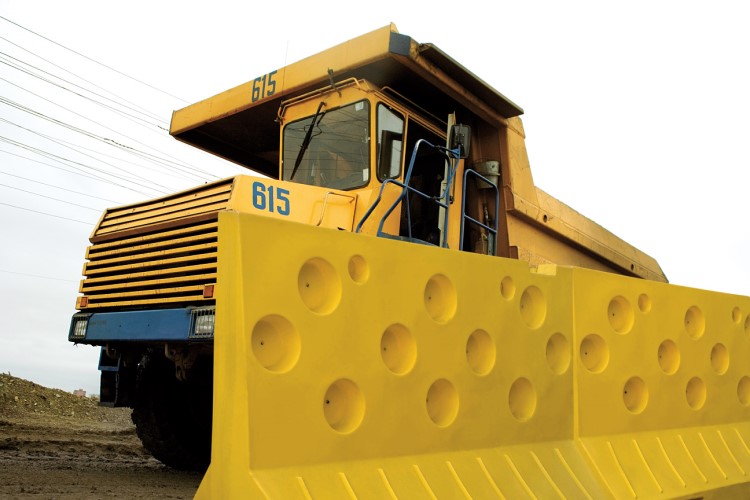Though water-filled barriers may look similar to the concrete traffic barriers often found in the median of freeways, these barriers do not have the same purpose as the concrete types. The concrete barriers are permanent installations and meant to prevent vehicles breaching them. They also have a slight slope at the bottom that helps to redirect the impacting vehicle’s wheels back to its original path. The friction caused by side impact helps to reduce vehicle speed. As such, concrete barriers, which are far too heavy for construction sites and temporary applications, are suited for installation next to or in the median of freeways.
The water-filled types also have an interlocking system to create an uninterrupted wall similar to that of the concrete boundaries, but they are not crash barriers. Though they have similar external dimensions, the structure and materials from which they are made are vastly different. Water-filled barriers are used as traffic delineators and redirectors only, warning motorists of roadwork hazards and of equipment and workers busy with road construction. Thanks to their lightweight design, these barriers are suitable for temporary applications such as closing off a particular section to vehicle traffic.
Water-Filled Barriers – General Applications
Because of their high visibility, the water-filled barriers are used as temporary boundaries on traffic lanes and act as diversion delineators on the offramps of freeways. The units are made from extra-strong UV-stabilised polythene. This ensures the longevity of water-filled barriers, even if they are used in harsh climatic conditions. The design allows for easy transportation and deployment and, once the units are filled on site with water or sand, they are sturdy, forming a stable, linked wall. The water or sand in the barrier provides it with the necessary weight and stability, making the barriers very stable, even in very windy areas, as the water or sand in them weighs them down securely and prevents them from moving easily.
Water-Filled Barriers – Functions
The barriers are usually temporary boundaries for traffic control. Though temporary in terms of application, they are nevertheless extremely durable and strong although, unlike concrete boundaries, these barriers are not designed to arrest an impacting vehicle. It is therefore a delineating barrier, not a crash barrier. Since the barriers are lightweight enough when empty for easy stacking, storage, transportation, and installation, the units are often used to create temporary pedestrian or cycle lanes. They are brightly coloured to be easily visible from afar and to warn motorists against a potential hazard or obstruction in their path, or to indicate the correct lane to use.
Water-filled barriers are often used as alternatives to drums filled with sand or water for traffic control and delineation. The drums do not form an uninterrupted, gapless chain or wall, which means that motorists may sometimes be able to inadvertently drive through the gaps and gain access to a restricted area. As such, the interlinked, water-filled barriers are a safer option for the creation of dedicated cycle lanes and to make construction areas more visible, so preventing vehicles straying from their demarcated paths. The units normally have anti-tampering plugs for protection against theft and vandalism. Cones and delineators are often stolen, but because of the interlocking system and the safety plugs, the water-filled barriers are less popular targets for thieves. Lighter and standalone delineators can be knocked over by gusts of wind and more easily moved by unauthorised people. Once filled, the water-based barriers are heavy and extremely sturdy. These barriers are thus not easy to move out of place.
The barriers are available in bright colours, which make them exceptionally visible, even at night. Motorists can see the barriers from a long way off, which gives them the opportunity to spot roadworks from a safe distance and giving them time to respond or choose alternative routes where possible. The high visibility is important where motorists do not generally expect road or construction works; roadworks are areas of high risk for motorists. The water-filled barriers thus also indicate that there is a high-risk area on the route. However, keep in mind that water-filled barriers cannot handle impacts from vehicles, and they are only used as highly visible temporary barriers at roadworks and construction sites. The wall system is, however, very effective in deterring motorists from taking shortcuts or deliberately stopping by the side of the road where it may be dangerous to do so.
View our range of products, including water-filled barriers and call us to discuss your road-safety product needs.

